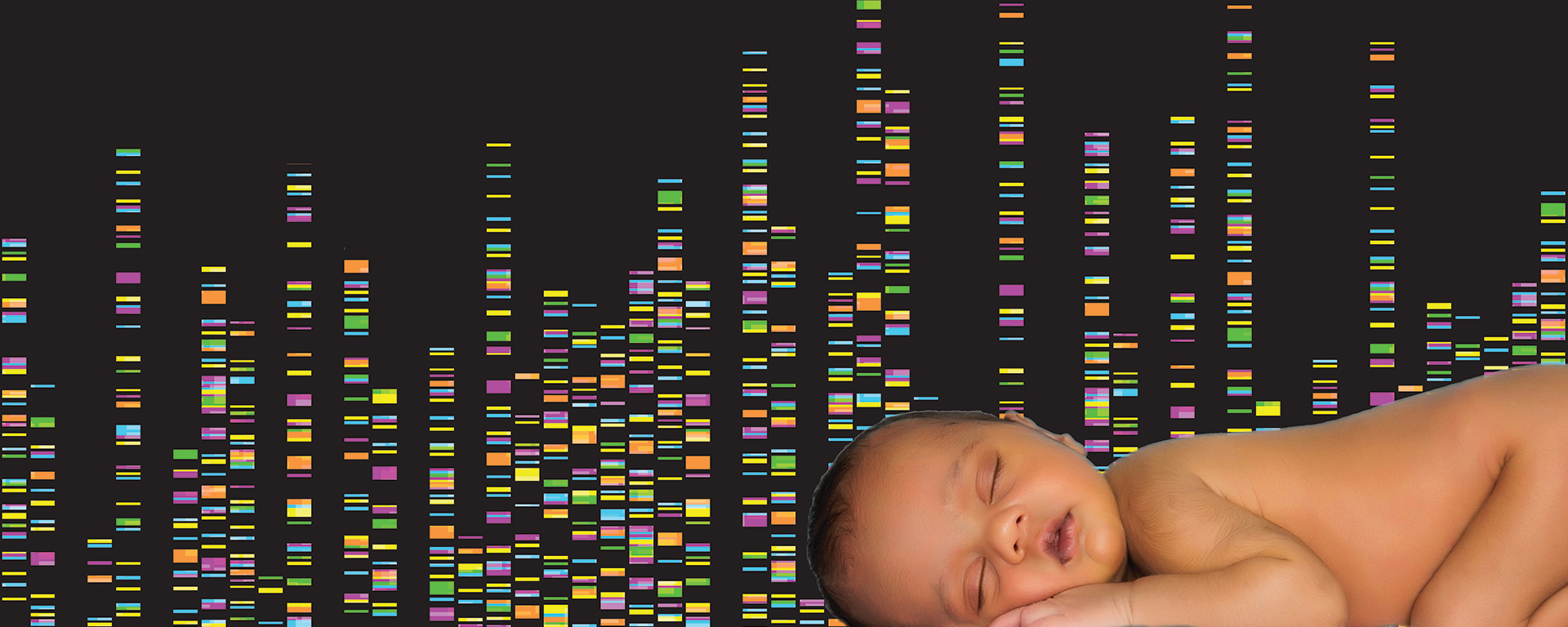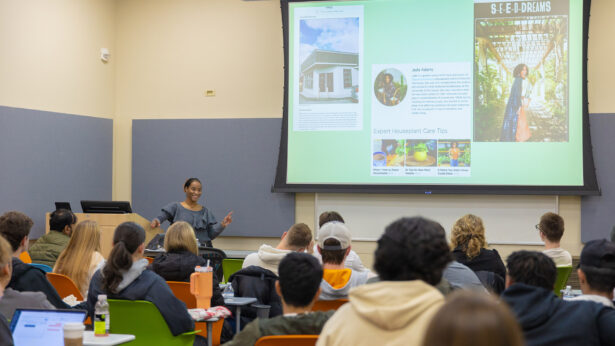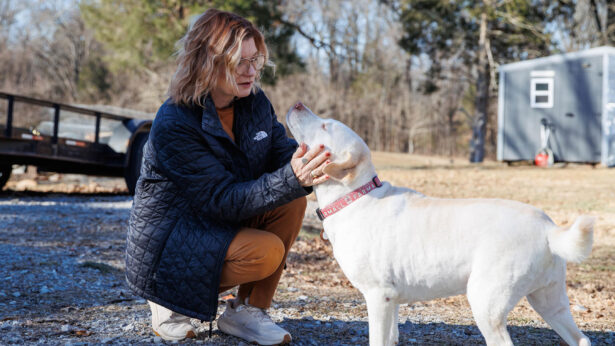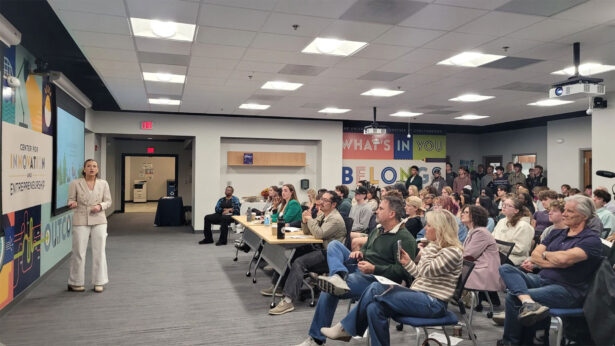It looks like just a small freezer from the outside as it runs at Le Bonheur Children’s Hospital in Memphis. But what’s inside could unlock mysteries.
Shelves hold trays of tiny vials of DNA—all labeled, bar-coded and stored at 20 degrees below zero.
The collection of tubes—thousands and thousands of them—represents the genetic essence of the region and the best chance of unlocking diseases quicker or developing medicines to combat diseases. Each holds the DNA of a child whose parents gave the UT Health Science Center (UTHSC) and Le Bonheur permission to study it. The biorepository has turned into one of the richest representations in the nation of people of African descent, a windfall of enormous proportion.
“We think we are contributing very robustly to this shortage that occurs globally in reference databases,” says Dr. Chester Brown, St. Jude Chair of Excellence in Genetics at UTHSC and Le Bonheur Children’s Hospital.
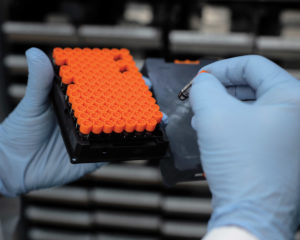
Of the combined samples in biorepositories around the world, only about 3 percent represent people of African ancestry.
“And that’s being very generous,” said Brown, who also is a UTHSC professor of pediatrics; professor of genetics, genomics and informatics; and genetics division chief at Le Bonheur.
In partnership with Regeneron Genetics Center, the first 10,000 DNA samples have been sequenced—that is, the DNA has been extracted letter by letter to decipher each participant’s genetic code; 44 percent of those samples represent people of African ancestry.
The power of that DNA is putting UTHSC on the human genome map.
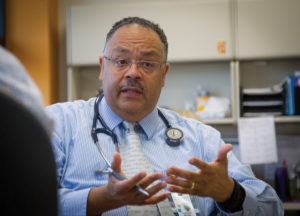
In 2021, the Genomic Information Commons (GIC), a group of seven children’s hospitals sharing their patient DNA data, invited UTHSC and Le Bonheur to join its network. In a matter of months, the Memphis genetic data, stripped of any personal identifying information, will be available to researchers in the group to advance scientific and medical discoveries.
“It’s a feather in our cap because they recognize what good work we have done,” says Dr. Terri Finkel, professor and associate chair of the UTHSC College of Medicine and Department of Pediatrics, vice chair of clinical affairs at Le Bonheur, and Children’s Foundation of Memphis Chair of Excellence. “We’ve been able to demonstrate that we can run a successful program that ethically and compassionately works with patients and their parents to help them understand what we are trying to do.”
That, in a nutshell, is building a biorepository that reflects the range of populations in Tennessee and using it to more quickly diagnose disease based on patient genes.
“This will immediately enable us to do studies on disorders like epilepsy or asthma or developmental delay. Or urinary tract infection,” says Dr. Robert Davis, head of UTHSC Center for Biomedical Informatics and the University of Tennessee-Oak Ridge National Laboratory Governor’s Chair in Biomedical Informatics. “We can look at these disorders in whites and African Americans. We can combine populations or we can study them separately. We can try to figure out exactly what genes might cause or make certain diseases more likely in groups of different ancestries.”
The Memphis project is called Biorepository and Integrative Genomics. On the UT Health Science campus, it goes by BIG, a nickname that tends to make researchers smile. When BIG was in the talking stages in 2014, big, as a descriptor, was an understatement.
“BIG has given us an opportunity to do what we always wanted to, which is really focus on human genetics and disparity in health care,” says Robert Williams, head of the UTHSC Department of Genetics, Genomics and Informatics.
The Vision
When UTHSC began drawing blood samples for BIG at Le Bonheur in 2015, other groups had been building biorepositories for more than a decade. From the start, UTHSC developed a different plan. Instead of simply extracting DNA from leftover blood samples, UTHSC leaders emphasized making patients and families key participants, including getting their full consent to sequence the DNA and study the results.
“We recognized that genomic medicine is the future and that we needed to be part of it,” says Dr. Jon McCullers, chair of UTHSC’s Department of Pediatrics and pediatrician in chief at Le Bonheur. “It was very clear to us at the time that Black-American populations were being left out. The argument I made at the time was this is the population we serve. If we are going to be doing precision medicine, and not just at Le Bonheur but across the health systems in Memphis, we had to have this resource. Otherwise, half our population can’t use it.”
Black people make up more than 60 percent of the population in Memphis. When over half the population is left out of discoveries that prolong life and diminish suffering, the effect of the racial disparity in medicine continues, McCullers says.
To help people understand how profound it can be, McCullers uses the example of blood-pressure medication, dispensed thousands of times a day in pharmacies across the city. When clinical trials on those medications were done, like in many studies, nearly all the participants were white men. Blood-pressure medicines work well for them.
“But if you are a young, Black woman and develop high blood pressure, a lot of those drugs won’t work,” McCullers says.
The choice now, decades after the drugs became commonplace, is still trial and error. The physician randomly picks one, and the patient keeps coming for follow-up evaluations until a prescription works.
“The goal would be to have a big database of Black individuals, men and women,” McCullers says. “Then you can do research studies and see which work in which populations. You can identify which genes are responsible for why they work or don’t work.”
Someday, McCullers hopes to be able to sequence the patient’s DNA and prescribe a treatment that would work the first time.
“We can’t do that right now because we have no idea why the drugs don’t work in Black women,” he says. “That was the vision when we started. We wanted to be able to do that research. We wanted to develop the database, first with a DNA bank and then the actual genomic sequences.”
‘The Goal is to Help Everybody’
Seven years later, UTHSC and Le Bonheur have more than 12,000 DNA samples from pediatric patients. Each is attached to the patient’s electronic medical record.
As of January, about 10,000 samples containing 100 terabytes of data have been sequenced, thanks to a partnership with Regeneron Genetics Center.
The company sequenced what both sides hope is only the first batch of samples from UTHSC and Le Bonheur. Regeneron’s contribution is worth $10 million and is a boon to what UTHSC intends to do on a larger scale to pinpoint disease.
“This is a true partnership,” says Dr. Alan Shuldiner, vice president at Regeneron. “It took forward thinking and a major resource commitment for the University of Tennessee to invest in this research. This is a collaborative effort in which both institutions put skin in the game to create something better than either could have alone.”
Through its contract with UTHSC and Le Bonheur, Regeneron has access to the UTHSC samples. The company is interested in amassing a biorepository from all regions of the world and eventually developing pharmaceuticals tailored to variations in genes.
“We all came out of Africa. Then, over thousands of generations, we have splintered off into all sorts of different groups. The genetics have followed,” Shuldiner says.
Yet, because the people who have historically participated in clinical trials or have participated in genome research almost exclusively have been white, only a small part of humanity’s genetic story is known, he said.
Regeneron, which is gathering genomic data around the world, especially in populations under-represented in today’s genetic databases such as South Asia and Africa, was immediately interested in the UTHSC biorepository. It was richly diverse, but UTHSC had also done the work to get research buy-in from the participants.
“This goes along with a theme that I think everyone is recognizing: That we need to work together with a multitude of institutions to amass the numbers of research subjects and DNA samples with the appropriate diversity to really move the dial,” Shuldiner says.
Every permission in the UTHSC database gives researchers access to the patient’s electronic health record, which can be coupled with the genetic data. With the health records, for instance, researchers wanting to look at epilepsy in children could pick the samples that contain genes of interest, call those patients, and if they were interested in participating in a clinical trial, eventually see if they are prone to developing epilepsy.
“This is important work,” says Dr. Robert Rooney, director of the Integrative Genomics Biorepository. “All genetic studies published through 2016 had only included 1 percent of people with African ancestry. That is atrocious.”
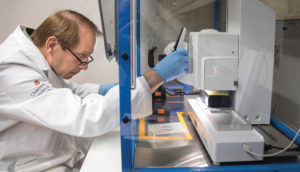
The reasons rise to the level of macroeconomics.
“Whoever can’t be treated appropriately or quickly cannot be productive. They lose money. They suffer. There are social implications for this that are heartbreaking,” Rooney says.
The next step is enlarging the biorepository beyond the pediatric hospital in Memphis.
“My dream is that we are going to expand this network throughout the entire state,” says Dr. Scott Strome, Robert Kaplan Executive Dean of UTHSC’s College of Medicine and head of the Tennessee Rare Disease Network.
Through the UTHSC 100,000 Genome Project, it has early agreements with East Tennessee State University in Johnson City and Regional One Health, the safety-net hospital for the tri-state region.
“Traditionally, African Americans have not benefitted as much from precision medicine. The goal here is to make genetic sequencing available to all people,” Strome says. “The goal is to help everybody.”
Connecting the Dots
It’s a blustery February day in Memphis. The chill does nothing to dampen the mood in Finkel’s second-floor office on Le Bonheur’s campus.
She logs into the Genomic Information Commons portal on her laptop. Out of a field of nearly 6 million pediatric records shared by the partner hospitals, she types in a few queries that turn up 18 instances of children with a rare gene linked to an epilepsy that produces severe spasms.
She can broaden the search by looking for mild to moderate severity or narrow it by searching by gender. With each query, the number of cases on her screen updates in real time.
The entire search takes less than a minute.
“This is why this is so powerful,” Finkel says, smiling as she looks up from her screen. “You can see you need almost 6 million patients to get a sense of what the disease is, what the variability of the disease is and how different people show disease characteristics.”
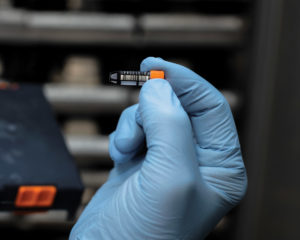
Overnight, the Memphis repository will increase the diversity of the genomic database. Together, the first three hospitals to join have a database of 20,000 genomes. The Memphis repository alone adds 10,000.
As a pediatric rheumatologist, Finkel sees rare cases. Having access to GIC suddenly gives her a universe of pediatric cases which can be sorted by gene.
“I see predominantly zebras and unicorns, the things no one else has seen. Those are diseases for which we often need genetics, genomics,” she says.
The cost of sequencing one person’s DNA has dropped from roughly $18 million in 2007 to $454 in 2021. That gives Finkel and others reason to think one day all newborns in the U.S. will have their genomes sequenced. “They don’t have to be devastatingly ill in intensive care to see where it is practical and useful to screen for the 500 diseases we can do something about,” she says.
Researchers on the UTHSC campus are already filing proposals to get access to the data from the 10,000 sequences.
“One is for inflammatory bowel disease in children, which is very understudied, both in children and adult patients of African ancestry,” Williams says. “Another person is looking at urinary tract infection, a common, complex condition, and how it might differ according to ancestry and genes people carry.”
That’s for starters, Williams said.
“There will be many more advances. In the future, we will be looking at RNA, the next step in translating genetic information from DNA to the body, and how genes get turned on or off by the RNA. And instead of just using electronic records with diagnoses, we will be able to look at CAT scans, MRIs and all sorts of things. The future is going to be improved discovery and use of this data that is routinely collected during medical care to really help advance science.”
For Finkel and the hundreds of physicians at Le Bonheur and UTHSC, the genomes allow them to identify single letters in DNA strands and use them ultimately to personalize treatment.
“This,” Finkel says, “will revolutionize how we treat patients with serious medical conditions.”
